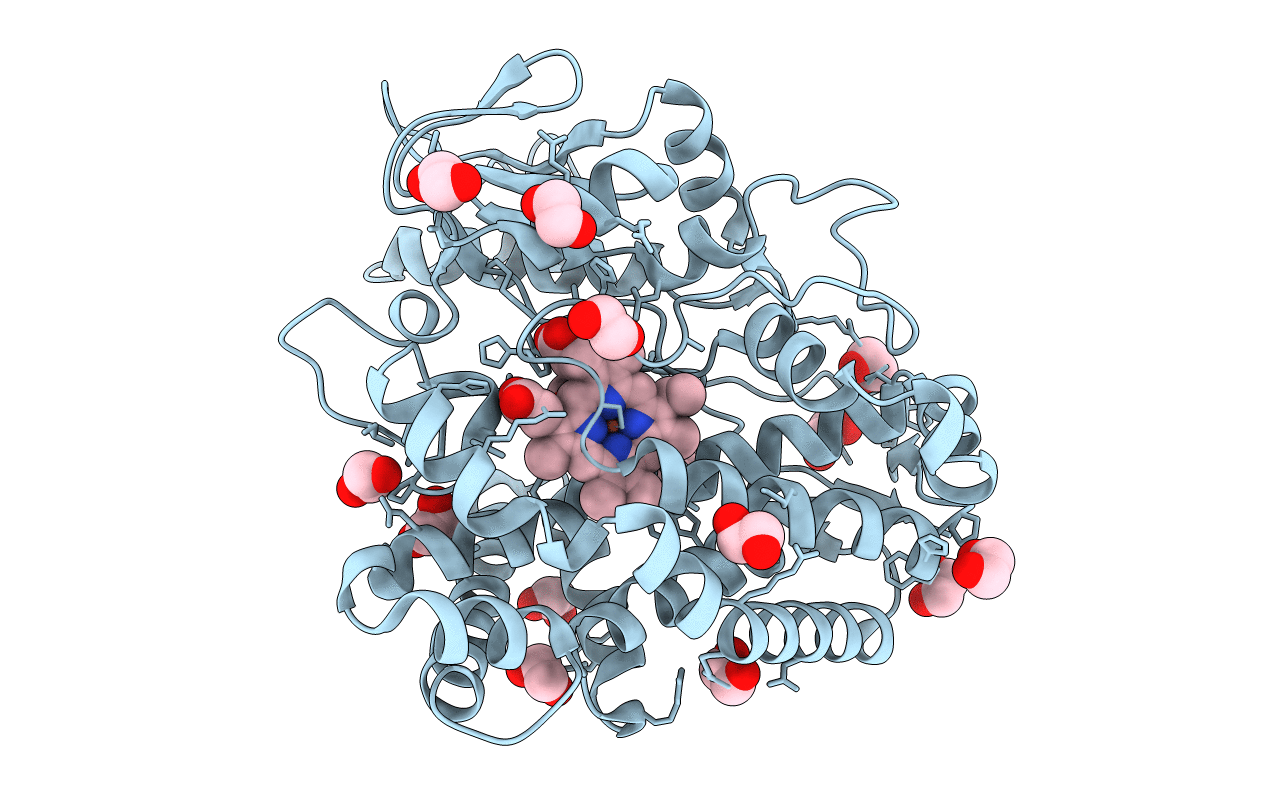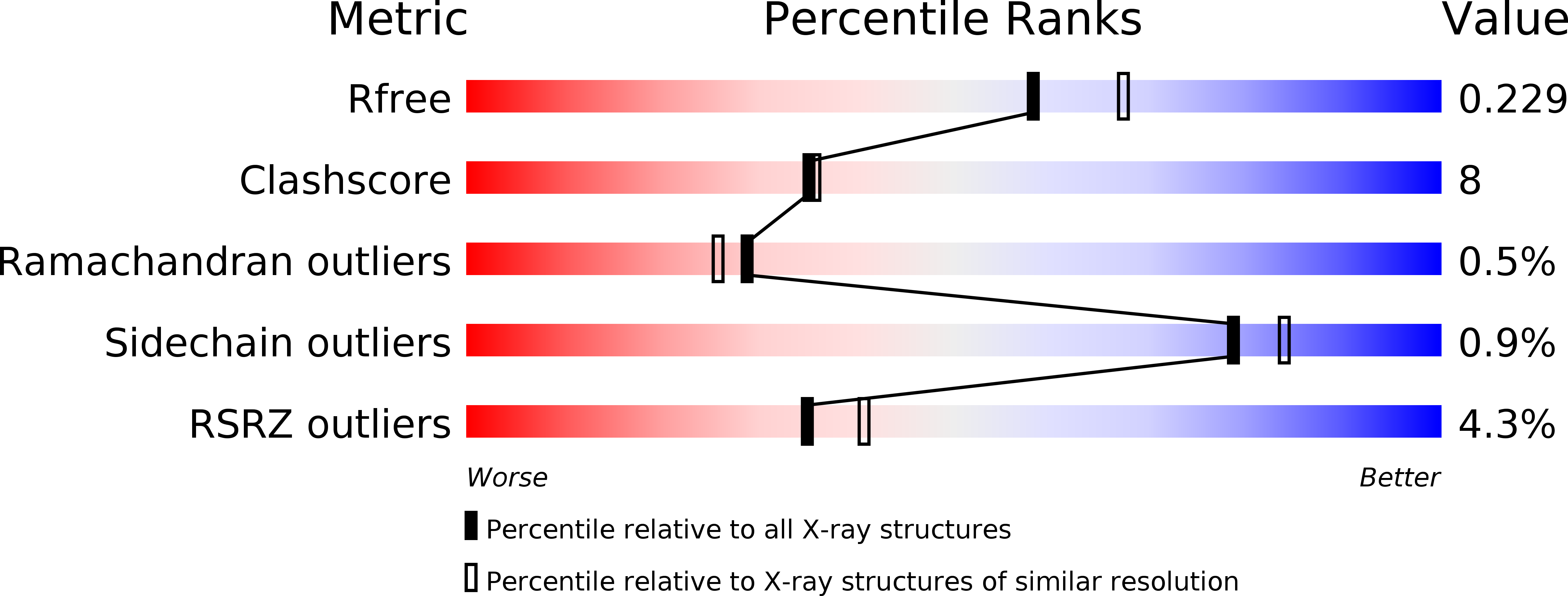
Deposition Date
2015-11-23
Release Date
2017-01-11
Last Version Date
2024-01-10
Entry Detail
PDB ID:
5EX8
Keywords:
Title:
Structure of P450 StaF from glycopeptide antibiotic A47934 biosynthesis; ethylene glycol cryo
Biological Source:
Source Organism:
Streptomyces toyocaensis (Taxon ID: 55952)
Host Organism:
Method Details:
Experimental Method:
Resolution:
2.10 Å
R-Value Free:
0.22
R-Value Work:
0.19
R-Value Observed:
0.19
Space Group:
P 31 2 1


